Cold War Bunker Revisted
The Team revisits a most interesting place, one we’ve been meaning to return to for some time now. Here, punched into the side of a solid mass of limestone at the base of a towering mountain, deep in Kananaskis, a most curious installation. Presenting, the Bunker dating to those crazy paranoid days of the Cold War. Flashback – it’s a tense face-off between the Superpowers, America on one side and the USSR on the other, and the world is but a single button-push away from being obliterated. Edgy times, these, and the future bleak and hopeless. Colour some four billion people scared.
And from this, an outside-the-box business idea…build a vault in anticipation of the of the Apocalypse, one so solid nothing can touch it and rent out space for storage of valuable papers, art and business records (it was never meant for people). You have something that needs to survive the end of civilization? We’re the people to call! Special finance rates! Hurry, before the bombs drop!
A project of the Rocky Mountain Vaults and Archives Company, a private firm, the Bunker was excavated circa 1969-1970 (although planning went back some five years prior). There were to be a series of secured rooms deep inside a near impenetrable mountain, each with a large bank vault-like door and with plenty of room for storage inside. The location, in the bowels of a mountain meant it’d be blast proof and overall about as well protected as could be possible. The limestone here is some of the toughest rock around.
Underground conditions also gave a form of climate control – the temperature being pretty consistent year round – and relatively dry conditions (still, some water intrusion would have to be addressed). Essentially, nothing could touch what was stored here. It was advertised as not just being bombproof but able to survive any type or natural or man made disaster (read on).
In addition to the vaults, there was to be an administration area, meeting rooms, cooking facilities and sleeping quarters for staff stationed inside and the guards entrusted to watch over the operation 24/7. A photo in a magazine shows the builders, two brothers, standing out front of their pet project. It looked like they had a winner…
Then for reasons not all that clear the Bunker was never completed. Perhaps money ran out (it’s said they dropped a cool quarter million on it) or maybe interest waned as world tensions eased. Either way, outside the actual tunnelling, most of what was planned was never completed. With the US and Russians bumping heads again we wonder if anyone’s been giving an idea like this a second thought.
Today the Bunker, a throwback to that most dangerous of times, is a strange oddity, empty and silent, save for the occasional explorers that pay it a visit. It’s a hike in, not a long one, but a few clicks each way. Warning, we’re told a bear frequents the area.
The Bunker sits at the base of a tall cliff (look for climbers above). A narrow winding road with a steep switchback at the end, leads to the entry – not sure how they expected big loaded trucks to get up there. Or even park or turn around. At best, it could accommodate a Jeep. Scratching my head on this one – and for other things too, like why specifically this spot? On a fairly steep slope, with very little room for support buildings, parking areas and so on. It just doesn’t seem all that practical. They must have had a plan though. Anyone reading this know more?
Once inside, a long straight passageway heads in for some sixty metres before coming to an abrupt end. About halfway in, a side passage branches off at a modest angle before it too dead-ends some forty five metres in. Off it are five chambers, each about twenty by seven metres in size. Ceiling heights are about three metres except at the entrance where it’s oddly a little less.
Passageways are big enough to accommodate a golf-cart sized vehicle. The floor, we suspect, was to be paved or given a bed of concrete to smooth it out. It almost looks like some parts of the Bunker were given a coat of white wash. And further, like a power line was strung in places. I guess it needed to be lit while they dug it out.
Here and there, jammed drill rods were left behind – in fact you can see lots of evidence of drilling. Suspect who ever built it had reasonable tunnelling or mining skills.
That the two passageways extend beyond the storage chambers suggests they had intentions of adding more off these. But then I guess work just up and stopped.
Pack Rats call the Bunker home. You can see evidence of their nests and can hear them scurrying about at times and maybe even perhaps even see them (we didn’t). There’s some graffiti inside, as would be expected I guess – there’s almost noting that doesn’t get tagged these days. There’s less litter when compared to our last visit some six years ago (Link: Cold war shelter). Back then there was a large 1970s era wood cabinet TV inside. No idea how they got it in – it’s a few clicks walk from the parking lot and those things were not that light. My folks had one. Anyway, it’s good to see the place overall pretty tidy.
Once in the storage chamber area the light falls off completely and there total darkness. Bring something to light the way – we mine explore (but rarely share those adventures, which may change) and have some high-lumen “daylighter” lanterns. Climbing/Caving Helmets are always a good idea underground.
Joining us this adventure is good friend, and a most fun photographer to shoot with, Byron Robb. We explored the Cold War Bunker on a cool April day, with lots of deep snow still on the ground (the entry was in fact almost blocked), and it was a bit of a trudge in for us. Especially when deep soft snow had us post-holing at inseam level – taken back to that Seinfeld “Shrinkage” episode. Ah, we suffer for our art.
From a Rocky Mountain Vaults and Archives piece of promotional literature:
“Here, deep inside a mountain, is the world’s near perfect archive. Physically perfect, functionally perfect, built for maximum protection against any form of destructive vice, from mildew to hydrogen bomb. The remarkable limestone vaults have no security limitations. They are fireproof, floodproof, windproof, rodentproof, mildew proof, cave-inproof, bombproof and theftproof”.
We’re sold!
The Cold War is today’s theme…
Calgary then and now – Civil Defence.
CFS Alsask Dome.
Canadian Forces Station Alsask.
In Event of Nucular Attack!
If you wish more information on what you’ve seen here, by all means contact us!
Date: April, 2018.
Location: Kananaskis Alberta, Bow Valley Corridor.
Article references (and thanks): Ben Gadd, BenGadd.com, Calgary Herald Archives, Calgary Public Library, Windsor Star.
If you visit the Cold War Bunker, please show the site respect.
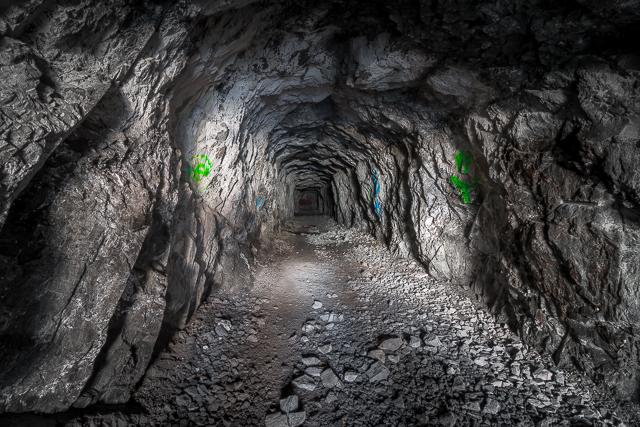
Entering the Cold War Bunker.
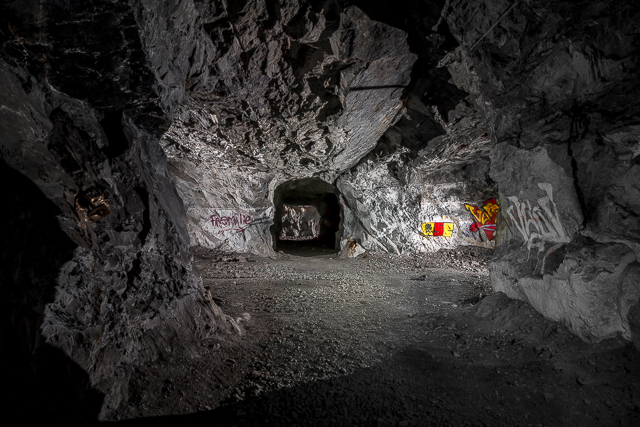
We’re deep inside a mountain in Kananaskis.
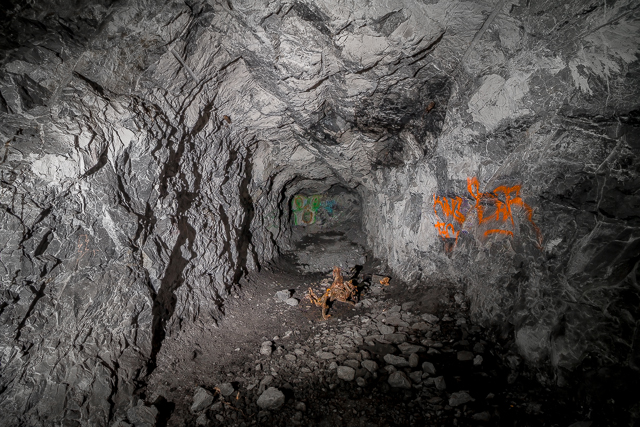
A side passage.
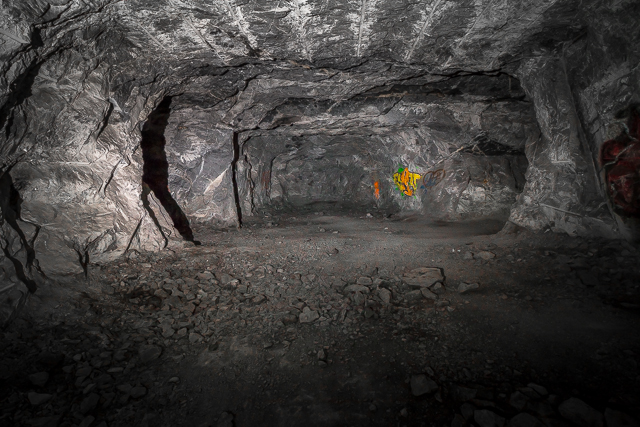
It was to be a vault for valuable items.
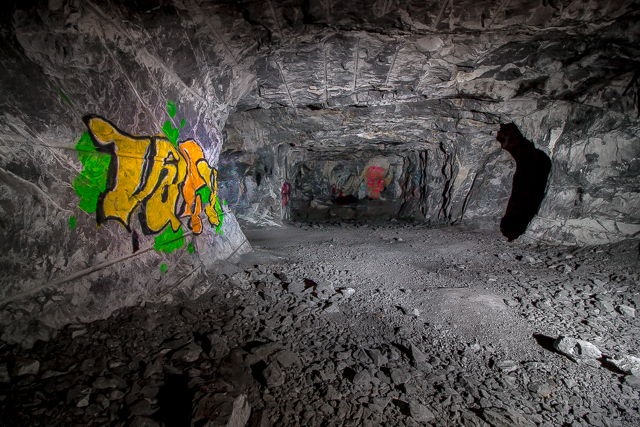
There are many side rooms, each the size of a multi-car garage.
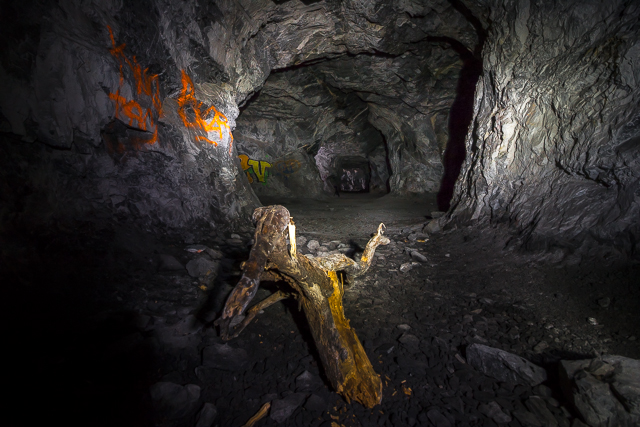
The bunker was never used.
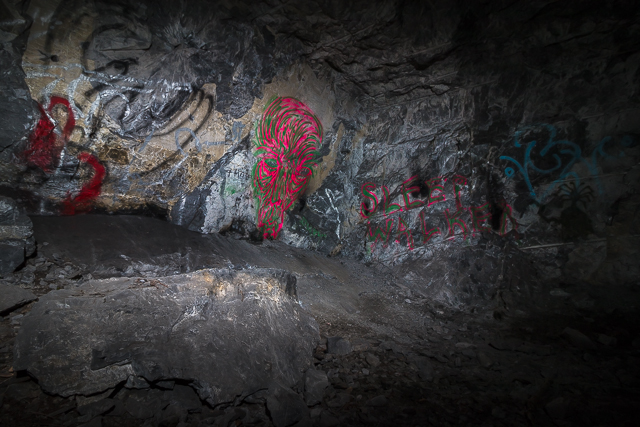
Graffiti decorates the walls.
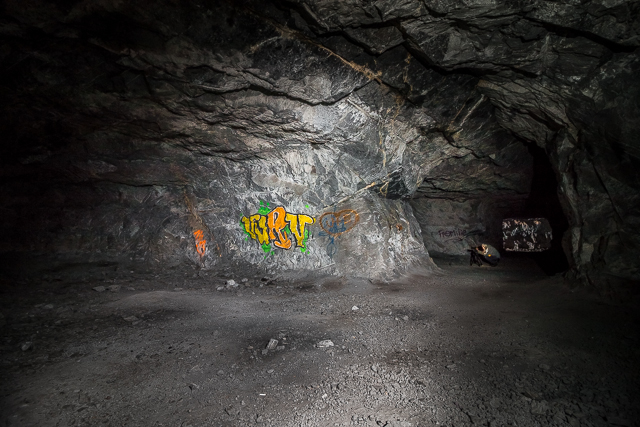
In back photographer (and dear friend) Byron Rob.
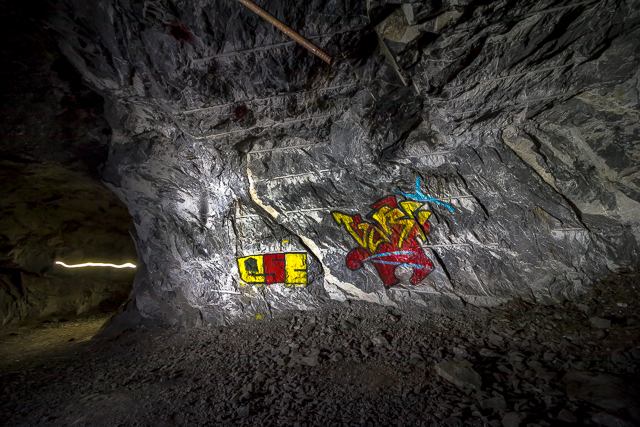
Above, a drill rod left behind.
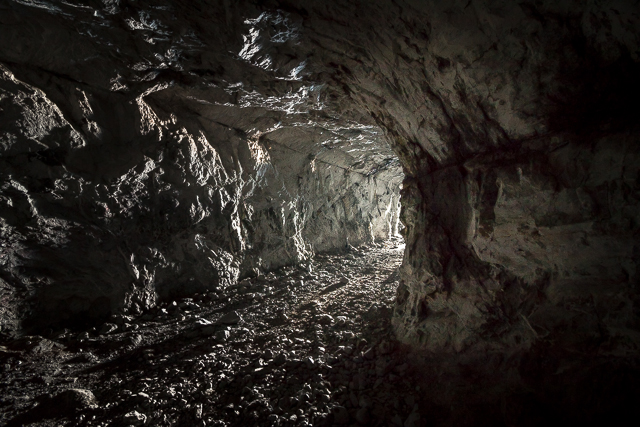
Follow the light…
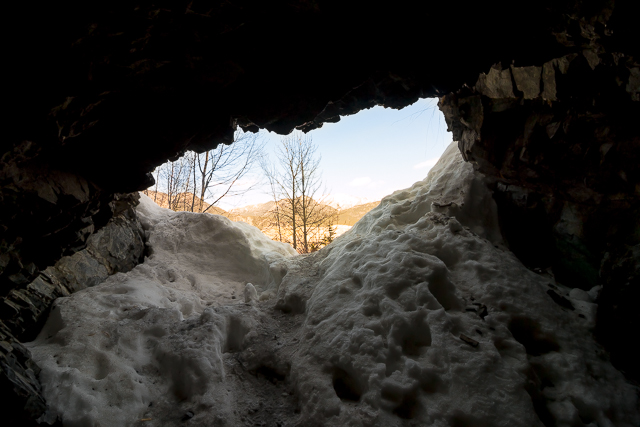
Visited while there was still snow on the ground.

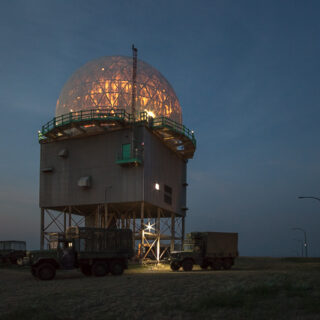
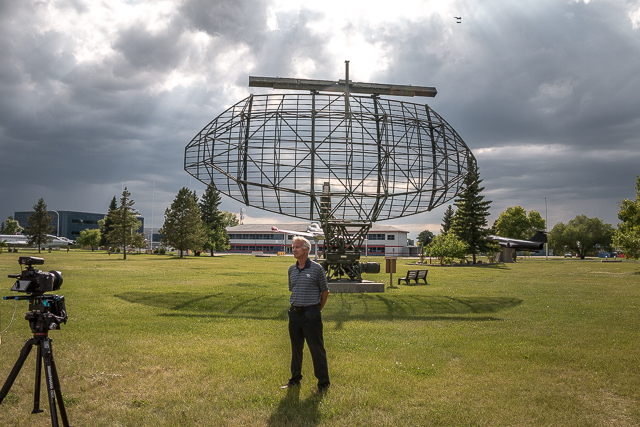
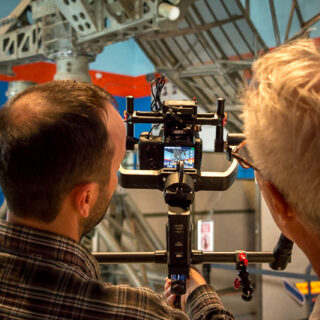
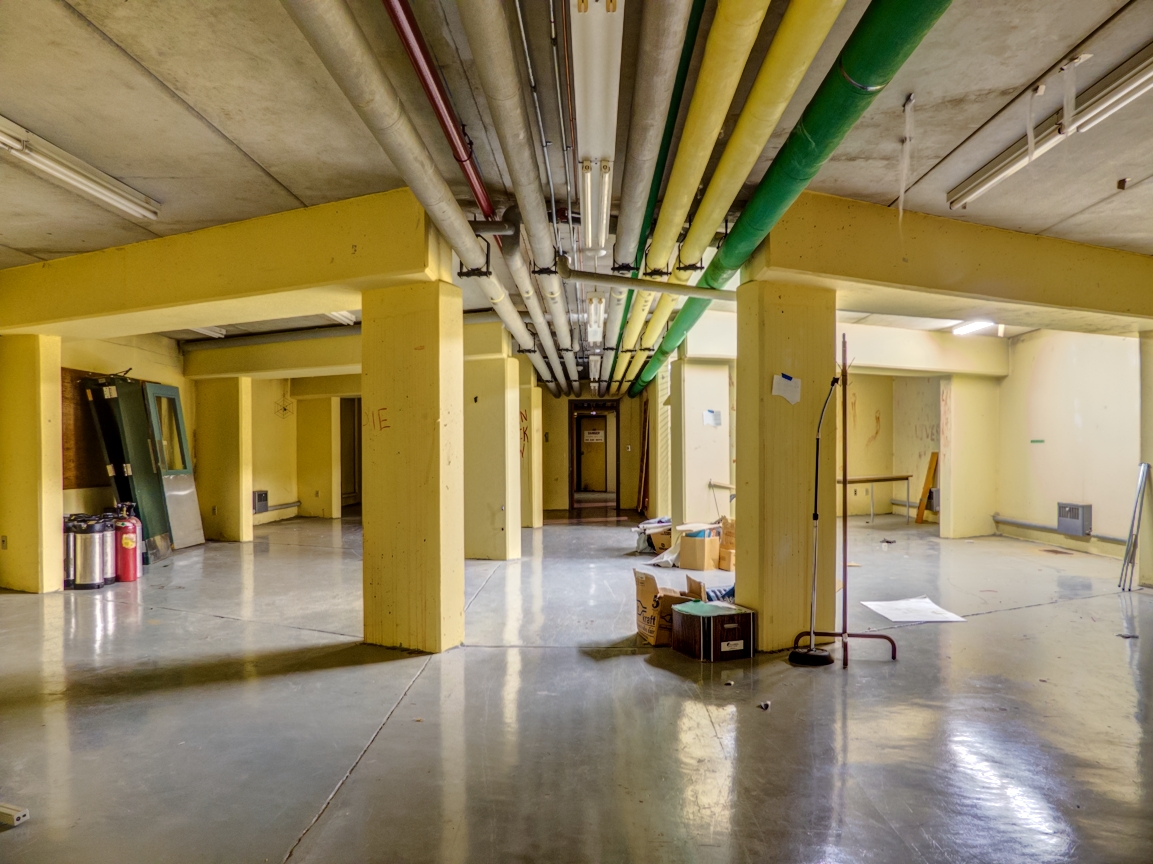
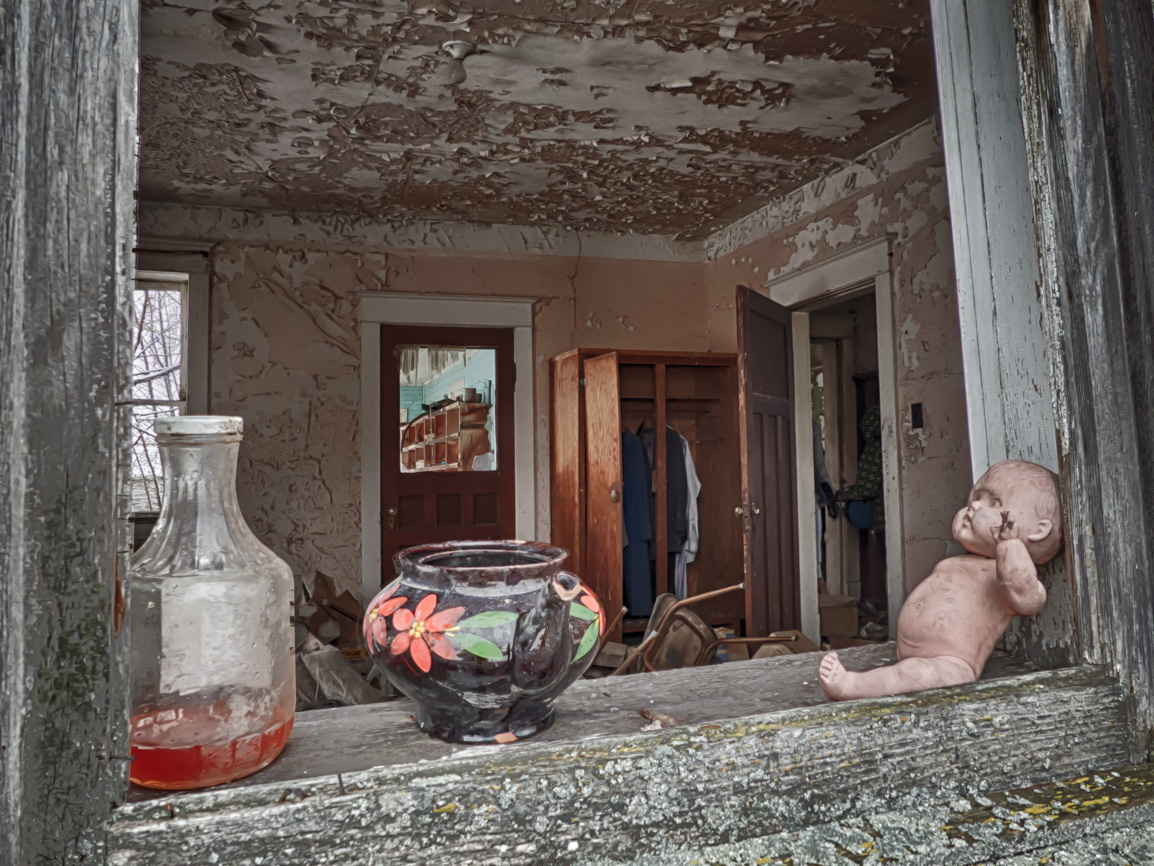
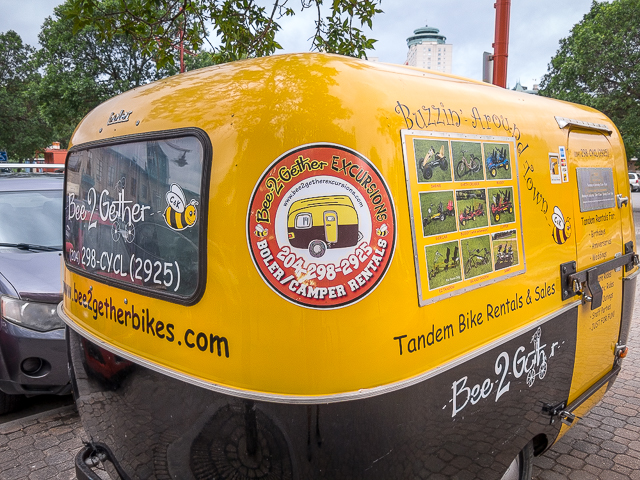
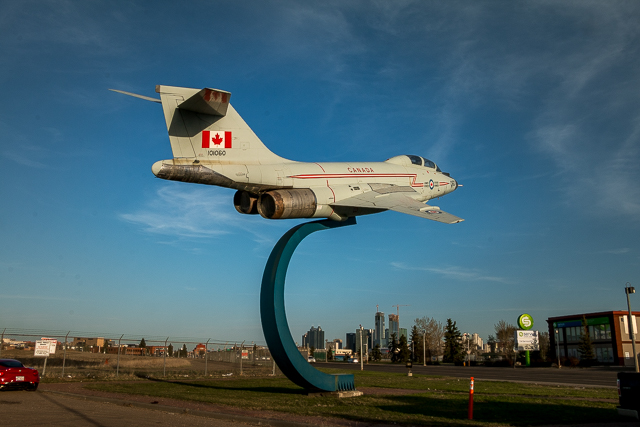
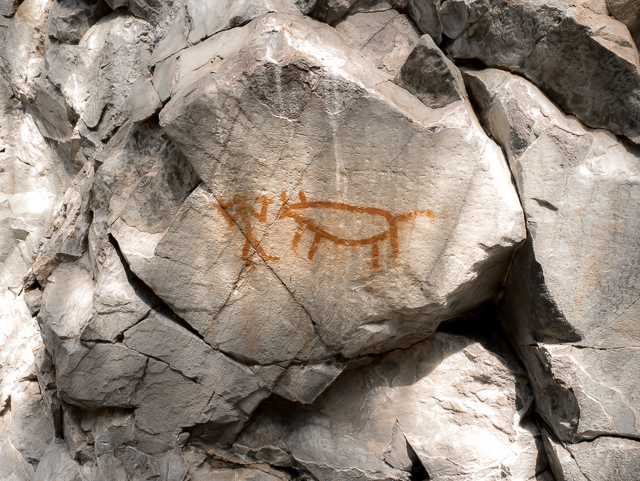
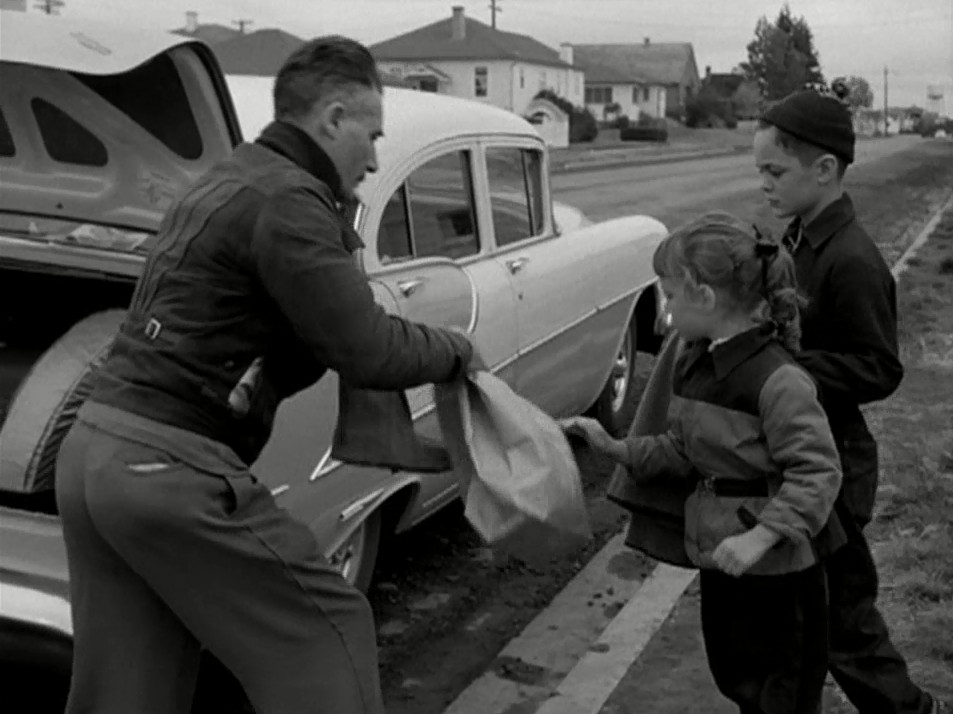
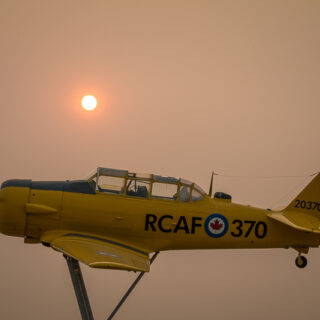
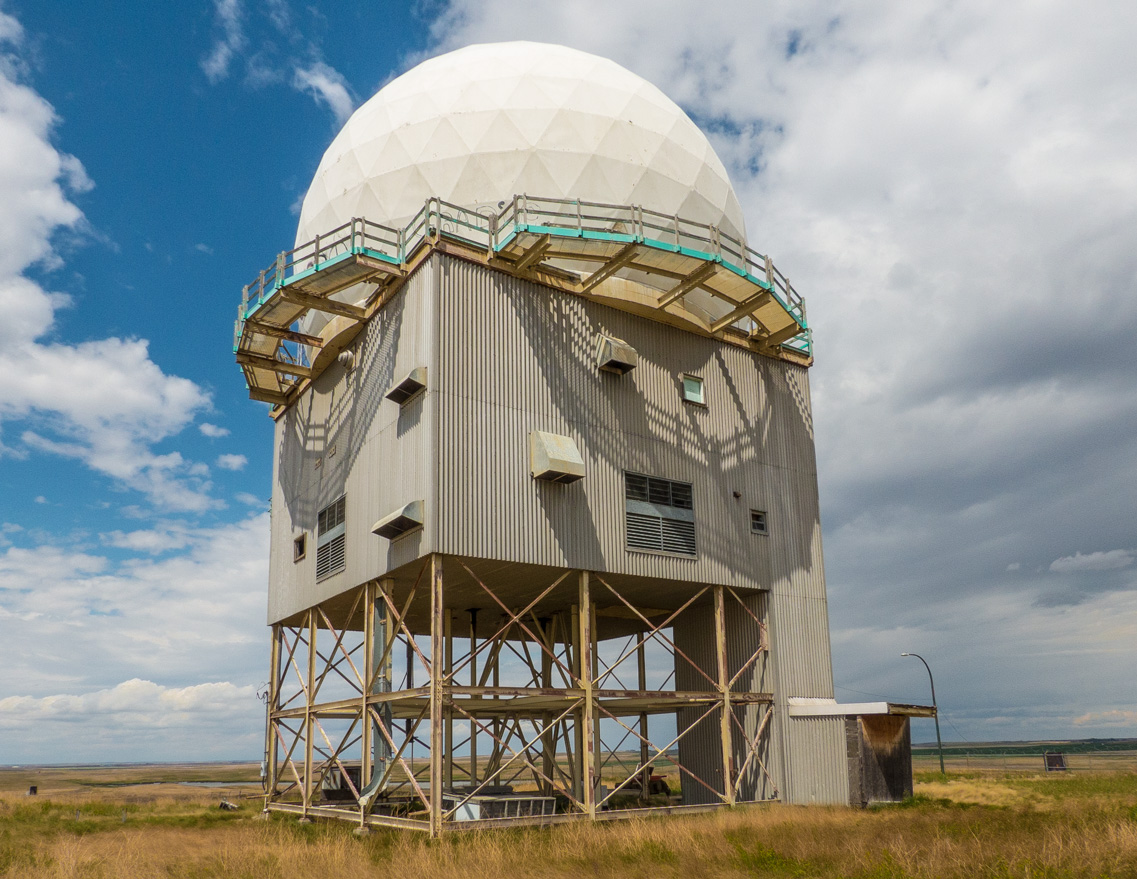
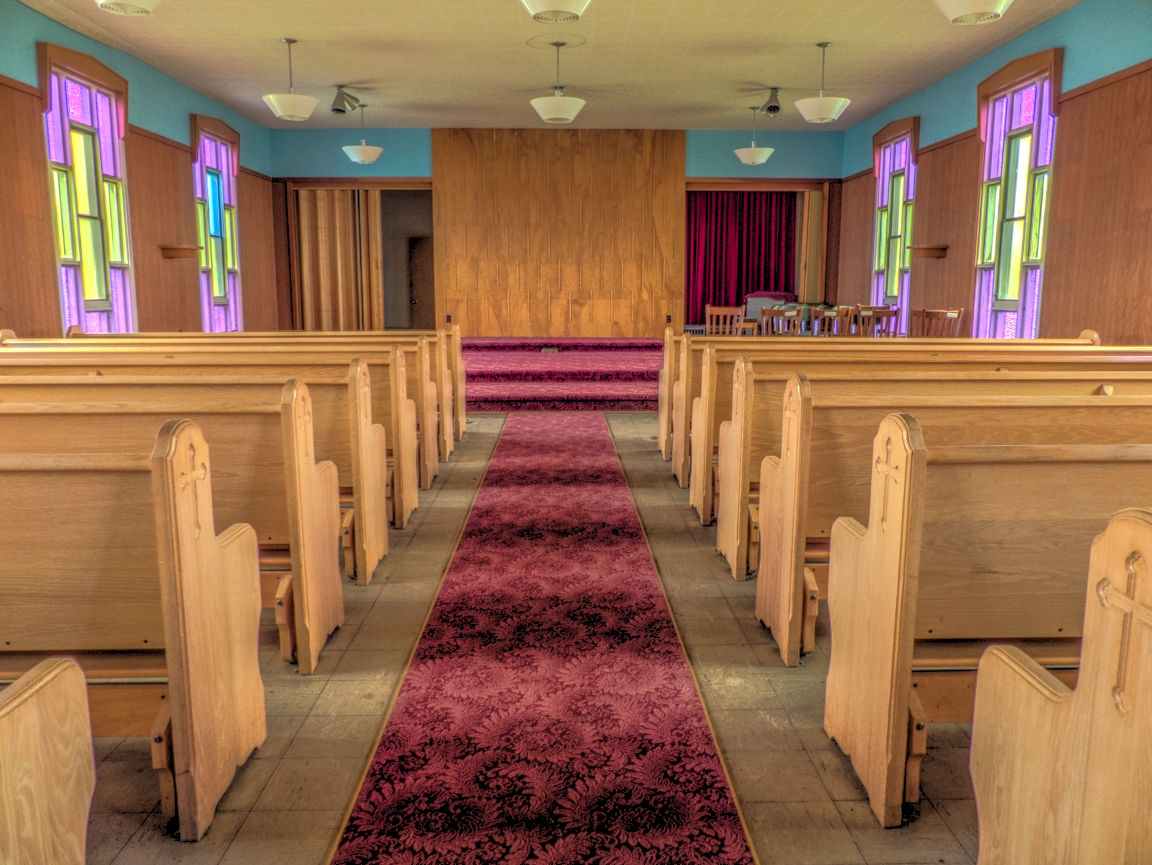







Pulled this from a facebook group. Thought you’d have a few things to say.
So I’ve been reading about the “Cold War Bunker” for years. I’ve been there several times. I am a civil and structural engineer with training in earthworks and mining.
The first public claim of this being a bunker was made by an ex employee of the mining company that dug it. He misinformed the local history society in Canmore and this story has been passed around since 1965.
It cannot be a bunker for several reasons. It leaks water. There is no parking or storage at the mouth for equipment or worker’s vehicles. There is noplace for adequate road access. A door or entrance hasn’t been made. The passageways are too narrow to store anything. It can be seen from the highway. The rock is unstable.
Were you to actually build a bunker it would be dry, granite or basaltic, invisible from any vantage point, have access and security and much much bigger.
It isn’t a bunker
It’s a limestone test mine
So this is the one you told us about Mark? Cool!
Newspapers of the era speak of it as a Cold War Bunker, which I’d say is pretty cut and dry. We’ve personally seen clippings and there’s pictures and names with reporters visiting the site. Also we spoke to a brother of the deceased builders and he backed up those stories. Still, this person is correct in questioning the execution. Something is off.
It leaks water – yes a lot. It’s suggested they’d be grouting or somehow lining the interior as a result, but later in construction. Minimally that’d be high maintenance. Agree the location is strange – no room what so ever for outside infrastructure and parking and no easy way to put that in. The cat road road up might be okay in a small jeep but nothing more. This has always bugged us. Why this place?
Since the Bunker was still under construction it’s possible they hadn’t gotten to the door part yet. The passageways – who knows the size needed? You could drive a cart around inside (if the floor was smooth), which might have been good enough. The side storage chambers are fair sized and more could be put in if needed. Not sure what being visible from the highway has to do with anything. Even hidden it’s not like the location could be kept secret and anyway who’s going to break in? It’s solid rock with presumably a thick steel door when done, guarded and watched. All it needed to do is protect stuff should hostilities break out. The Bow Valley would not be a priority one target so it’d be well away from bombs and missiles, if that’s even a consideration. Seen or unseen, it’d function the same. This one has us puzzled.
Since being built fifty some years ago, there’s been little signs of rock fall. Based on that alone, it suggests solid rock. Shoring up would be possible too I suppose.
That it’s said to be a mine. Hmmmm. Limestone is a low value commodity and economically should be quarried (pit mined). It wouldn’t make financial sense otherwise. You don’t tunnel but blast the living daylights out of the rock till the place you’re working has been levelled. Right across the Bow River is a limestone quarry doing just that. Further, the material is practically everywhere in the front ranges – there’s mountains of it – so why not put the operation beside the railway line for easy transportation? Like all the other quarries across the river. I guess they could have put in a spur but the bridge over the Bow would have been costly. Of course, they may have planned for road haulage only serving local markets (so Calgary), and the Trans Canada is conveniently close…if it was a mine. Alberta Energy Regulator records (the government body overseeing mining) seems silent on the subject. You had to go through them (what ever they were called back then) before you could dig material. Even to test. And they kept detailed records. It just doesn’t add up.
With that said, there’s more to the story than we know and completely understand this person’s skepticism. To an outsider looking in, it suggests something was up. A scheme? Misguided intentions? We keep going back to those two. I guess we’ll never really know the full story, but we can say with reasonable certainty, it was designed and promoted as bunker even if the implementation was flawed.
Whew, long winded us!
Great place for Halloween outing!
Agreed! Spook central in the Alberta Rockies!
Great shots!!
Thank you – as we always say, we love doing it!
…looks like an adventure!
Do it!
Was there still a big wood rat midden in there?
A couple of them. We heard the little devils scurrying about, but never really saw them.
You outdid yourself on this amazing post!
Coming from you John that’s huge! Thanks!
Fascinating!
Amen!
As a genealogist and lover of history and archives, this is really interesting to me. Thank you for sharing!
Glad you liked it! Thanks!
I ventured in there earlier this year.
It’s a fun outing!
There is a huge kilometrage of tunnels under Graz Castle which now have a huge collection of narrow gauge locomotives including three Compressed Air Locomotives one of which is a UNIVERSAL TRAMAIRE SPECIAL built in Denver!
Now that’s cool. I’m going to look that up!
Aside from graffiti has anyone spotted quartz lines in the lime stone and if so traces of gold?
There’s very little in the way of metallic minerals in the Alberta Rockies. You have to go into BC before the geology becomes favourable for the formation of stuff like that. No fortunes to be to found here. Sorry.
…not familiar with any of this.
And now I hope you are…
Very cool!
Indeed it was! Both in that it was interesting, and rather chilly inside, a temperature it pretty much keeps all year. Brrrr…
And so wish I could have come.
There will be a next time, guaranteed.
That’s amazing! I’d love to explore there, and the fascinating ancient cave drawings!
When you’re out this way…
Looks like your and Byron had some fun!
An absolute blast!
And of course the graffiti idiots have to make their mark …shameful.
If people can get to it, there will be tagging. I know…
What about the “mountain” at Trout Lake outside of North Bay Ontario? That is,one of those secret military strongholds.
Now that sounds interesting. Looking it up as we speak. The Norad Bunker…
Years ago my bro’ drove his Jeep right to the entrance. There was a road to that location. From what I remember there were three areas split off but that vault is not very deep, maybe 70 – 80 feet.
A Jeep was about all the road would ever be good for. That road was all wrong for what they planned and I saw no way they could ever build it to accommodate big trucks – it keeps bugging us.
It looks like they used hard rock miners to do this.
Yes, I’d venture to guess. It seems well built.
…let’s do this one!
You’ll like it!
Isn’t that the definbaker bunkers ? Like that’s the nickname or whatever.
No, that was a government undertaking, where as this one was privately funded. And it wasn’t for people but valuable things. The “DiefenBunker” was a planned for safe haven for government officials to wait out the Apocalypse.
…Im only a few miles from it right now and may have to do an after work hike.
You’ll enjoy it!